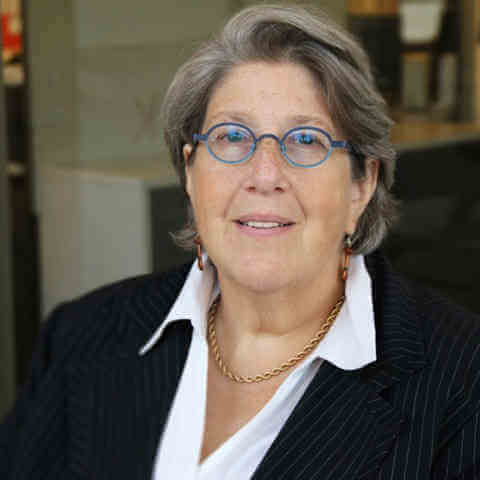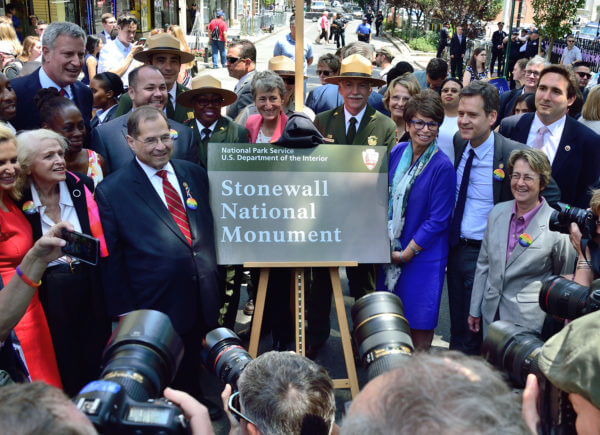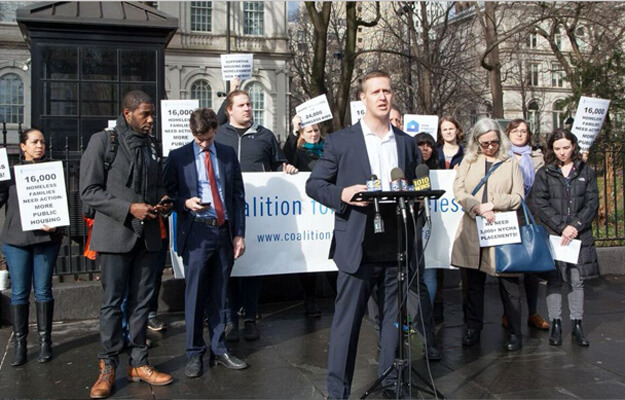Jerry Hoose, 1945-2015. | © 2015 BY STEVEN F. DANSKY
Jerry Hoose, a Christopher Street resident and gay rights movement fixture for generations, died on February 11 in Beth Israel hospice care, after a battle with stage IV pancreatic cancer. Jerry was one of the first people I met in the Gay Liberation Front after joining in November 1969, shortly after Stonewall. He had been at Stonewall on that fateful evening five months before.
Like a lot of young men of his generation from the New York hinterlands — Jerry was raised in Brighton Beach — he went downtown to connect with the clandestine gay world. The Stonewall wasn’t exactly “classy,” but if you liked to dance and knew Diana Ross backwards and forwards, you’d go.
During the Stonewall Rebellion, he fought back with drag queens and other street kids, and is featured in the PBS American Experience documentary, “Stonewall Uprising.” After the rebellion, Jerry attended a planning meeting at Alternate U. on the second floor of a building at Sixth Avenue and 14th Street, at which Martha Shelley named the organization that represented the first radicalization of queer people after Stonewall: the Gay Liberation Front.
Early gay activist, on hand at Stonewall Rebellion, remained in the fight to the end
Modeled after Viet Nam’s National Liberation Front, GLF espoused take-no-prisoners, radical, confrontational politics and a complete remaking of society so that gays, lesbians, and “transvestites” (our term for transgender folks) could be free to be themselves. GLF wanted to “Smash the Church, Smash the State” and upend patriarchal institutions like psychiatry, the law, monogamy, “missionary-position” gender roles (man on top, woman on bottom, and all static “butch/ femme” role designations), and the “legalized theft” some people called “property.”
GLF meetings were often anarchistic and crazy. Jerry loved GLF, but was basically apolitical. He was a “vernacular,” street-and-T-room-cruising queer. He adored a nighttime venue in the far West Village known as the Trucks, where scores of guys, looking for sex, crawled into the backs of empty, pitch-black, unlocked 18-wheelers docked for the night. The Trucks had been an institution downtown for decades. We “liberated” them, passing out leaflets, talking to men, and politicizing them. You’d meet friends there. Jerry was always among them.
The cops periodically hit the Trucks, mostly scattering guys using squad cars and flashlights. For a few years after Stonewall, the area around Christopher Street had become remarkably “free,” so the cops came around mostly to intimidate men without actually arresting them. Though like police anywhere, they could get nasty. Jerry often yelled out a warning. Late one night I was sitting on the concrete loading ramp, watching men grope their way into the adjacent darkness to do what they wanted. I was engaged in nothing I had to worry about, when suddenly the revolving lights of a squad car approached. Jerry yelled, and everyone tore out.
I stayed. Since I was doing nothing, what could they bust me for? A cop with a flashlight appeared and just nodded. A few minutes after he was gone, Jerry returned furious, with about 15 guys. After Stonewall, he had an absolute loathing of, as we called them, “the pigs.”
“You’re sick, Perry!” he shouted at me. “Anyone who’s not scared of the cops is sick!”
That was one of my favorite Jerry Hoose stories; he used “sick” often. He once interrupted an argumentative GLF meeting by screaming louder than anybody: “Anyone who doesn’t think homosexuals are sick should come to one of these meetings!”
We got a lot done though, and Jerry was very instrumental. He steered our dance committee that produced weekly dances at Alternate U. These were the first regularly scheduled, gender-mixed, non-Mafia, openly-queer socializing experiences in New York. They were advertised on the back page of the Village Voice as “Gay Community Dances,” making this the first time “gay community” was used publicly in the city. The dances had a $3 donation and brought in around $500 per week — a princely sum then.
The money supported GLF’s actions. A large chunk of it was used as a donation to the Black Panthers, who were under government siege: an “action” that threw GLF into another target of controversy. We were no longer just a bunch of queers in the West Village, but were joining our politics directly to Huey Newton’s Panthers, a revolutionary, outlawed party closely monitored by the FBI.
Jerry was in favor of the Panther gift, although in truth he wanted the money for “gay things,” for homeless or unwanted kids like he’d been with no real place to go in the Village, except to hang out on the street — a situation which has hardly changed. He continued his work on the dances until GLF folded about two years later.
I was at the meeting where Craig Rodwell, owner of the Oscar Wilde Bookstore, proposed the idea of having a “Christopher Street Liberation Day March” up Sixth Avenue to Central Park, in June — exactly one year after Stonewall. During the ensuing debate, Jerry was all for it, although many women weren’t, sensing that an annual event like this might swiftly be taken over by the bars, then still Mafia-run. Jerry became one of the first marshals of the march, making sure order was kept and that we were not simply disciplined but openly defiant.
“Keep your heads up! You’re not in a dark bar anymore, but in the sunshine,” he shouted through a megaphone during this first, tense march. “We’re gay and we’re proud! Say it now: ‘Gay and Proud! Gay and proud!’”
Jerry Hoose in the garden at the LGBT Community Center. | FACEBOOK.COM
Jerry spent the rest of his life feeling that way, although he could get “pissed off,” as he complained, “with the gay community” — meaning his life at the LGBT Center on West 13th Street, which he thought was not doing enough to deal with ageism. Jerry became focused on SAGE — now known formally as Services and Advocacy for GLBT Elders — and grew close to Tom Weber, director of the group’s constituent services. With Tom’s help, Jerry organized panel discussions over the years about LGBT elders and their interactions with the community. Two of them — in 2009 and 2010 — spotlighted the Gay Liberation Front. Reaching back to his chant at the first Christopher Street Liberation Day March, Jerry titled the second of those two panels “From Darkness Into Light: The First Year of Gay Liberation.” Both events had packed audiences, mostly young people profoundly moved that this small group of ragged radicals had changed history. A third, in 2011, specifically about intergenerational relations in the community, featured young people in conversation with elders from GLF.
After SAGE moved its headquarters uptown, Jerry worked to keep its comfortable drop-in center on 13th Street in the Village — an effort that involved bureaucracies of both organizations. Jerry, trained in GLF, could be vocally persuasive. He got as many people as possible on his side, with petitions and open meetings. After a lot of contention, last year he won: the drop-in center has remained at the Center, though upstairs from its longtime home, with some SAGE members nervous about its permanence. It was the last controversy Jerry was involved in — he was already in the process of dying.
Jerry was 69 at the time of his death. Always so bright and street-smart, he had a genuine Brooklyn accent you don’t hear anymore. I can still hear Jerry’s often cantankerous but lovable voice in my head, and I hope that it continues there for a long time.
Perry Brass’s latest novel is “King of Angels,” a Southern, gay, Jewish coming of age story set in Savannah, Georgia, in 1963, the year of JFK’s murder. His next book, “The Manly Pursuit of Desire and Love,” will be published in June, 2015.




































